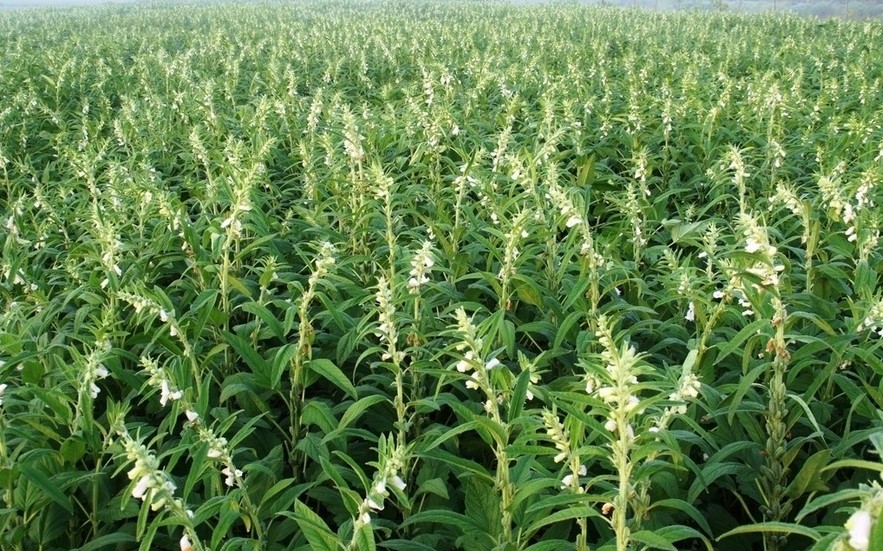
Farm of Sesame plants. Sesame is better crop rotation of cotton, maize, groundnut, wheat, and sorghum besides reducing nematode populations that attack cotton and groundnut.
With the rise of unpredictable rainfall, pests and diseases in most parts of the country, farmers who grow sesame famously known as simsim or ufuta in local languages stand high chances of avoiding losses which come with inadequate rainfall and pests’ invasion.
Sesame which originates in East Africa is the oldest commercial oil seeds with an oil content of 48-55% which is the highest of any oil crop while the protein content ranges from 44 to 48% according to Infonet-Biovision organization which provides agricultural database with scientific and practical validated information and knowledge.
Good harvests of sesame can be expected during rainfall of 300-600mm given the plant is highly susceptible to water-logging, and can therefore only thrive during moderate rainfall. It is also highly resistant to drought and can provide good harvests, when soil moisture is adequate.
READ ALSO: Farmer beats drought with simsim
READ ALSO: East African Malting unveils new sorghum variety
READ ALSO: East Africa’s urban families fight food shortages with city gardens
The crop which takes only 120-140 days to mature also do well in a well-drained sandy soil with a pH value between 5.4 and 6.75.
Sesame requires a temperature of between 26-30degC to blossom making it well adapted to the East Africa’s warm climate.
In Kenya for instance Sesame can be grown in Kwale, Kilifi and Lamu districts along the coast, Busia, Bungoma and Kakamega in Western region and Meru, Mandera in Eastern and North Eastern regions respectively.
Andrew Nyatangi a farmer in Lamu County who plants sesame twice a year says the crop only needs light showers rainfall to grow making it a perfect agribusiness venture against maize and beans during short rain seasons.
David Ndirangu, a farmer from Mpeketoni in the same county who at some time incurred huge losses when he planted maize and other crops due to inadequate rainfall, joins a list of farmers who makes over Sh25, 000 per season from simsim farming.
Ardhi Industries in Karen, Nairobi which presses 150 kilograms of sesame seeds a day buys one kilogram of sesame at Sh750 - 850.
“In Nairobi the cost of sesame seeds is expensive because only a few farmers grow the crop in small scale for family consumption,” said Christopher Kabiru, founder and director of Ardhi Industries.
Farmers who grow cotton, maize, groundnut, wheat, and sorghum should think sesame because it is better crop rotation besides reducing nematode populations that attack cotton and groundnut.
Sesame hay, if carefully dried, can be used as fodder for the livestock.
KS-S6 variety of sesame gives an average yield of 2.5-3.0 tons per acre and has a high poding ability making it tolerant to rust and shootfly.
















Comments powered by CComment